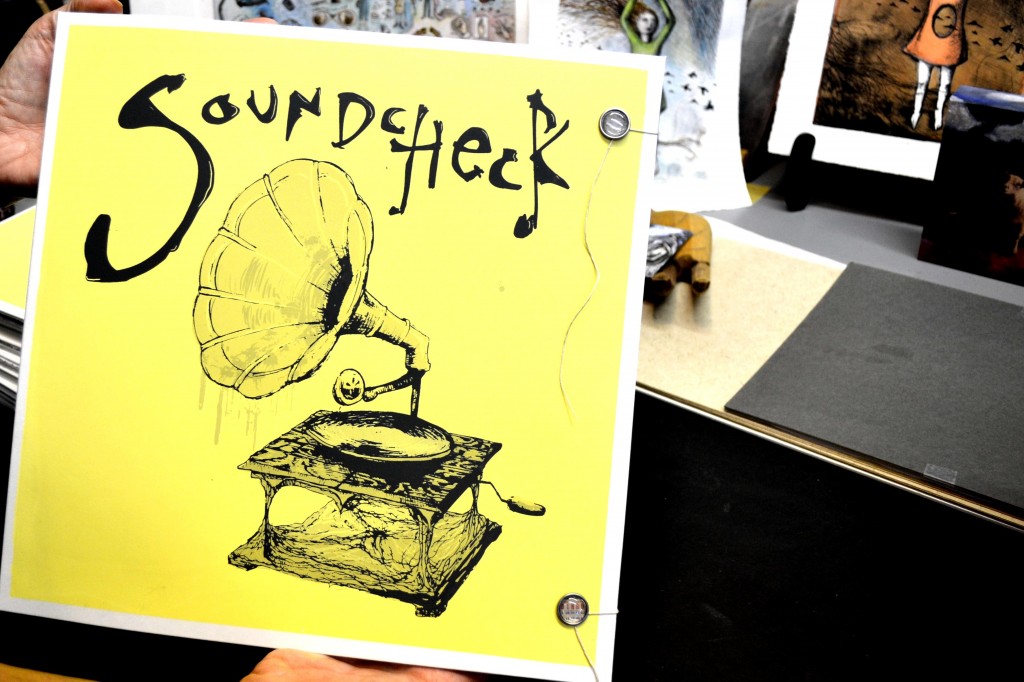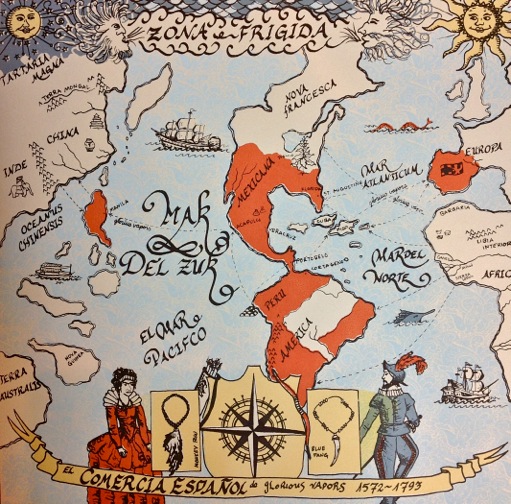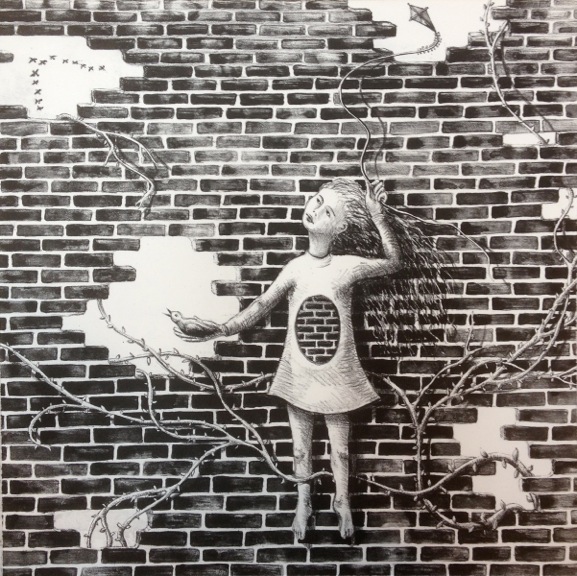Culture
SeePlus: Printmakers Jam Too

Welcome to a new recurring feature here at Heave, SeePlus, in which Chloe Stagaman helps you learn a little more than average about the Chicago art community every month.
Four students are working on lithographs at Chicago Printmakers Collaborative on Western Avenue. There’s ink. There’s stone. There’s beer.
Deborah Maris Lader, CPC’s founder (a.k.a. a hip printmaking guru in Pumas), glides around their work tables and explains each part of the intricate process. You’ve got student one carefully adding acid to glasses of gum arabic, counting every last drop. When he’s finished, he’ll be able to use this chemical mixture to make sure all the non-image surfaces on the stone don’t absorb any ink.
Then there’s student two, rolling greasy ink over her first image to prepare for second etchings. Student three is already up in a special ventilated room cleansing his finished etching and preparing it for prints.
Student four is doing the fun part. She runs a coat of ink over her etching, watches it appear in deep black and white contrast, and fixes it for the press.
All the while, CPC’s current exhibit hangs in the backdrop. The Collaborative’s show, titled Soundcheck, consists of work by nine Musician-Printmakers, all of whom are dedicated, creative, and multi-talented. The show was Lader’s idea, inspired by her own experiences juggling her career in art and her role in the band Sons of the Never Wrong.
“I’ve always wanted to do something that bridges that gap,” says Lader.

Each 12×12 print in the final folio is a powerhouse—small but mighty. Enlisted by Lader herself, the artists all play dynamic roles in both musical and artistic communities. It says something about the variety of printmaking when you see Chris Flynn’s unbelievably detailed polymer gravure “Dance of the Diaboloctopus” (pictured above) in the same series as a colorful, whimsical map piece, “My Blue Fang,” by Brandon Ross and Maria Sanchez.

If the prints were not diverse enough, the songs that accompany each lithograph are equally as varied. Lader was cracking up while over at a bandmate’s studio mastering the final CD. Her eventual description of the mix: a hodge podge. Although enjoying the musical aspect of the exhibit will involve purchasing one of the limited amounts of folios, setting you back $750 each, the prints alone are worth the voyage to Western Ave. (If you’re feeling extra nifty, take a notepad and jot down some of the artist names that participated. It could mean seeing a band later this year.)
Lader’s own piece in the exhibit, titled “Wholes,” rings true to her experiences as a mother. After watching her youngest go to college and dealing with a newfound empty nest, Lader started drawing a series of images of a girl with a hole in her chest. Sometimes the hole has birds flying through it, other times the hole is void and empty. In “Wholes,” the hole is bricked in, as the girl stands in front of a brick wall which is also interrupted several times by massive gaping structures looking out into the landscape beyond.

“Printmaking or art making offers me a respite from the barrage of ideas,” says Lader. Instead of mourning the loss of her son to academia, Lader turns her state of mind into artwork. Her pieces provide her with a way to make her feelings into a physical product.
“What I like about printmaking is that it lends itself to the way I think,” Lader responded when I asked her why she chose printmaking in the end over all over art forms. “I think in terms of transparent layers of information.”
In the same way that printmaking involves a step-by-step process of layering techniques, recording means laying down tracks and thinking about all the different elements of a song. Lader is always writing while she’s working on prints, and the two create an outlet for her to share pieces of her life.
Soundcheck seeks to celebrate Lader and her peers for their effort and dedication to both of these creative channels, with a special emphasis on the originality of each artist. Even with something as specific as Musician-Printmakers, you can give nine artists the same project and they all come back with completely different interpretations of the prompt.
The Collaborative was started in 1989. Lader was teaching at the university level, and the last print shop had just moved out of town. It was when she saw a print shop for sale in “some artist news thing” that she dumped all of her savings into the building that houses the Collaborative to this day. Worst case scenario: it would be a place for her to make prints. What it became, however, was a much-needed space of creativity in the community. Printmaking was getting harder and harder to come by.
When asked what she’s most proud of, Lader hesitates to pinpoint a certain achievement. She raves about her two sons and how proud she is of them as they’ve grown up.
“If I were to be proud of something or pleased by something,” she eventually says, “it would be the fact that I’ve created a real community of people. I’m proud of the fact that I made that out of nothing.”
On one of the walls in the studio there’s a placard written out to Deborah Maris Lader, thanking her for creating the CPC. It reads:
“Here’s to many more years of parties, prints, and inky plates!”
I must agree. Bring on the inky plates.
[Soundcheck is on exhibit at the gallery through August 31. The gallery is open Fridays and Saturdays from 12-5 pm and by appointment. To read more about the exhibit and the other artists featured in the folio, go to http://www.chicagoprintmakers.com/docs/gallery/gallery.php ]